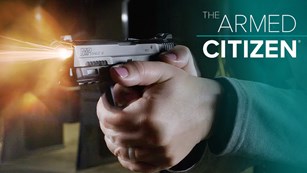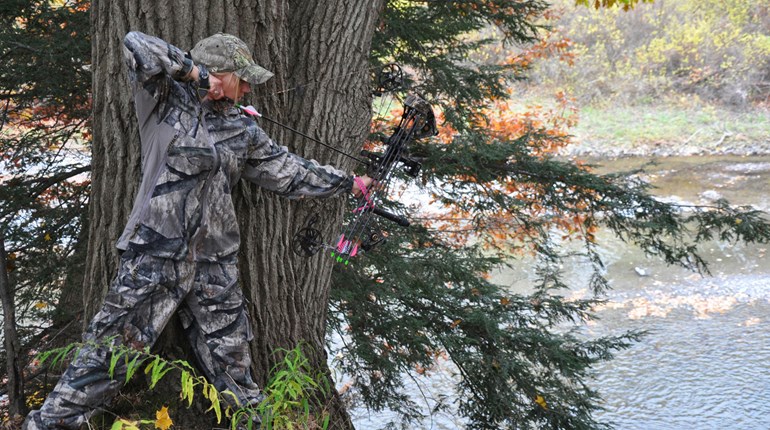
Gone are the days of shooting without ear protection—and good riddance. Every shooter I know in my dad’s generation needs hearing aids because of all the shooting they did in their youth with no protection. We know better now, and you wouldn’t dream of hitting the range without protecting your hearing. But you have tons of options to consider. What do you need to know?
First, there are two main types of hearing protection, with many variations within each type: Earplugs that go directly in your ear, and earmuffs that fit over your ears.
Earplugs: These come in a huge variety. There are the ubiquitous disposable foam earplugs we’ve all used. You can have plastic (soft or hard) custom-molded plugs made at an audiologist’s office or even do the molding at home and send it to a company that will make you custom plugs from the mold. There are hard little circles with foam inserts, sometimes with multiple inserts for an off-the-shelf but slightly more custom fit. A pair I wear a lot has a skeletonized soft plastic outer part that nestles into the outer ear to hold the inner part, made up of three layers of soft plastic flanges, in place. Some of these options can be made with electronics added, which muffle the sound of gunfire but amplify conversations and everything else at normal noise levels.
Muffs: Most muffs are pretty similar, with a padded part that fits over your entire ear and a hard adjustable strap that holds them in place. Some are slimmer than others, but many shooters (myself included) find it hard to shoot long guns with muffs on because the muff can interfere with their cheek weld. Many versions of electronic muffs are available.
About NRRs
Every pair of muffs or earplugs you can buy should carry a Noise Reduction Rating. For shooting, you want a minimum NRR of 22, but the higher, the better. Foam earplugs actually have a high NRR of 33, but that’s only if they’re worn correctly—which they seldom are. To insert foam earplugs correctly, you should squeeze and compress them until they’re slim enough to slide deep into your ear canal, leaving only a slight rim you can pinch to remove them. If they’re hanging out of the ear canal, you’re missing most of the noise reduction benefit.
Doubling up on hearing protection by wearing plugs and muffs at the same time is a great idea, particularly at indoor or covered ranges, where the sound of gunfire tends to be amplified. However, just like putting on two coats of 25 SPF sunscreen doesn’t give you the equivalent of 50 SPF protection, doubling up on hearing pro won’t give you the combined benefit of both products’ NRR. For example, wearing 29 NRR plugs under 27 NRR muffs will give you an equivalent of about 34 NRR—which is still great.
Other Considerations
You also need to think about comfort, convenience, and, of course, price. Because you’ll be wearing this ear pro for a while, you don’t want them to cause you pain in other ways. I have a pair of in-ear plugs that have a hard outer circle that sits in the ear, and they just don’t fit me well. My entire ear will ache after half an hour of wearing those plugs (why I still own them, I don’t even know). Muffs are usually comfortable, especially a slim pair that allows me to shoot a long gun without interference. Muffs need to fit tight enough to create a firm seal around your ears, but not so tight that they cause you pain or give you a headache.
Also consider convenience. If you’re just at the range by yourself, this isn’t as big of a deal, but if you’re with others, particularly if you’re taking an all-day class, keep in mind that you might be taking the hearing pro on and off or in and out frequently during shooting breaks. Foamies are inconvenient for this, but if they’re on a string that hangs around your neck so you don’t lose them, that helps—I want all my earplugs on a string, in fact. Muffs are fast and easy to take on and off, but it brings up the question of what to do with them while you’re not wearing them. I usually clamp them around my thigh, which works if I’m not moving too much, or on my head just above my ears, which works for a while but gives me a headache after about 10 minutes. Whether you choose muffs or plugs, electronics can make them more convenient as it means you won’t be taking them off every time someone speaks.
You can also get plugs and muffs with Bluetooth that will allow you to connect directly to your phone, which is convenient for taking phone calls or listening to music while you shoot, if that’s your jam.
What’s NOT Proper Hearing Protection
The National Sporting Clays Association recently banned Airpods and other similar earbuds from use in shooting competitions, as these products do not have any real noise reduction rating and are not designed to protect your hearing. They’re designed to play music, not to protect from loud noises, and unless they are somehow fitted into a custom-molded shell by an audiologist, you should not be wearing this type of earbud at the range.
Some Options to Consider
Walker’s Razor Slim: These muffs have a slimmer profile than most, making them easier to shoot in for many. They come in a ton of colors, have electronic technology for protection and noise compression, carry an NRR of 23 dB and won’t break the bank, at an MSRP of $69.99.
Safariland Liberator HP 2.0: More expensive electronics have more features and usually a faster reaction time, and these electronic muffs are no exception. They have high-definition speakers and three hearing protection modes based on how much noise amplification you want, and they offer both active noise reduction and active noise cancellation. You can even get them in a behind-the-head model if the over-the-head strap bothers you. MSRP: $349 - $499 depending on the options you choose.
Axil XCOR PRO: These in-ear plugs carry an NRR of between 21 and 23—you need the right tip to fit you correctly—and have Bluetooth for convenience. Axil says they “compress loud noises rather than shut them off,” and they’ll protect you from any loud noise over 85 dB (gunfire is around 140 dB). They’re compact and feature-packed, but they don’t have a string—so don’t lose one! MSRP is around $200.
WildEar FieldEarz: Combining electronic noise compression technology with a custom-molded fit, these plugs are not cheap, but you might find the comfort to be worth the cost. They have an NRR of 26 dB with an “impulse peak insertion loss rating” of 31 dB reduction of 150 dB impulses/noises. Five modes let you choose how much background noise you hear—choose from Everyday, Boost, Noisy, Extreme and Mute to reduce wind noise, enhance conversations, or silence all incoming signals if you just need some peace and quiet. You must have an impression of your ears made at an audiologist or purchase the WildEar impression kit separately and do it yourself. Then you’ll send in your impression and WildEar builds your FieldEarz to your specifications. MSRP: $999.
Decibullz Custom Molded Earplugs: These are non-electronic molded in-ear plugs, but they have a high NRR of 31 and can be molded—and remolded—at home. Just follow the instructions on the Decibullz site to soften the material in boiling water and mold to your own ear until they’re just right. MSRP: $25.99.
Howard Leight Smartfit Corded Reusable Earplugs: I keep a pair of this type of plugs in my purse for spontaneous needs, and often wear them at the range when I don’t need electronics—they’re cheap, reusable, and a lot easier to use correctly than foamies, and they’re on a string so I never lose one. They carry an NRR of 27, and at just $6.34 for two pairs, you can keep a pair in every range bag.














































